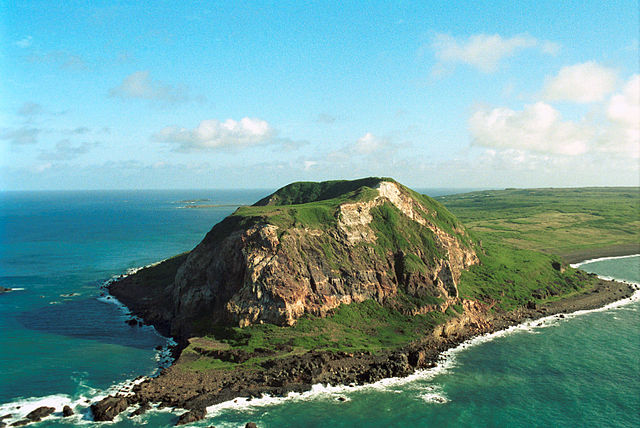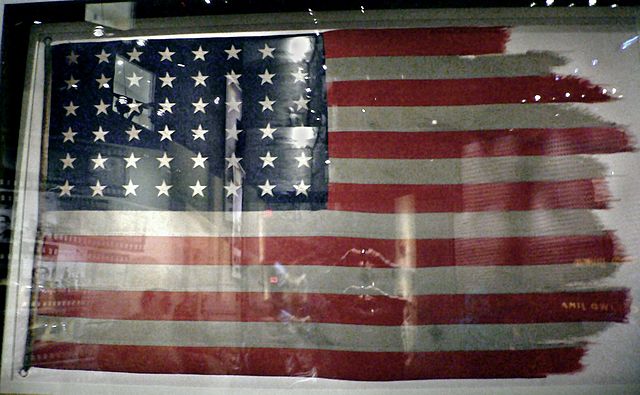Raising the Flag on Iwo Jima
Raising the Flag on Iwo Jima is an iconic photograph of six United States Marines raising the U.S. flag atop Mount Suribachi during the Battle of Iwo Jima in the final stages of the Pacific War. The photograph, taken by Joe Rosenthal of the Associated Press on February 23, 1945, was published in Sunday newspapers two days later and reprinted in thousands of publications. It won the Pulitzer Prize for Photography and was the model for the Marine Corps War Memorial in 1954, dedicated to honor all Marines who died in service since 1775. The memorial, sculpted by Felix de Weldon, is located in Arlington Ridge Park, near the Ord-Weitzel Gate to Arlington National Cemetery and the Netherlands Carillon. The photograph has come to be regarded in the United States as one of the most recognizable images of World War II.
Raising the Flag on Iwo Jima, by Joe Rosenthal of the Associated Press
Mount Suribachi (pictured in 2001) is the dominant geographical feature of the island of Iwo Jima.
Raising the First Flag on Iwo Jima by SSgt. Louis R. Lowery, USMC, is the most widely circulated photograph of the first flag flown on Mt. Suribachi.[citation needed] Left to right: 1st Lt. Harold Schrier (kneeling behind radioman's legs), Pfc. Raymond Jacobs (radioman reassigned from F Company), Sgt. Henry "Hank" Hansen wearing cap, holding flagstaff with left hand), Platoon Sgt. Ernest "Boots" Thomas (seated), Pvt. Phil Ward (holding lower flagstaff with his right hand),
The flags from the first and second flag-raisings are preserved in the National Museum of the Marine Corps in Triangle, Virginia. The second flag, pictured here, was damaged by the high winds at the peak of Suribachi.
Mount Suribachi is a 169-metre (554 ft)-high mountain on the southwest end of Iwo Jima in the northwest Pacific Ocean under the administration of Ogasawara Subprefecture, Tokyo Metropolis, Japan.
Mount Suribachi as seen in 2001
U.S. Marines raising the American flag on Mount Suribachi during the Battle of Iwo Jima




